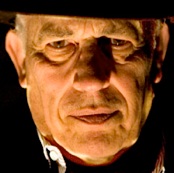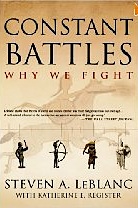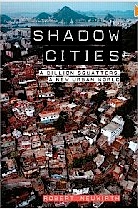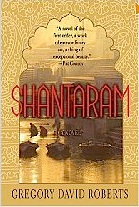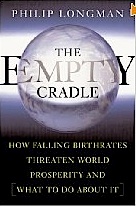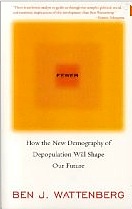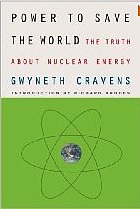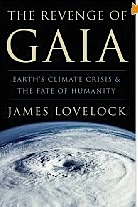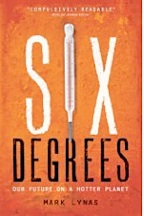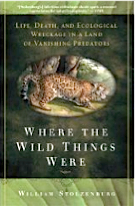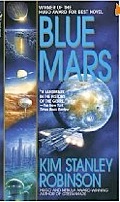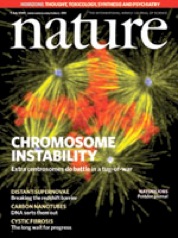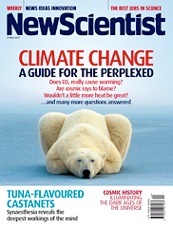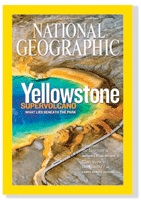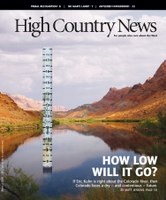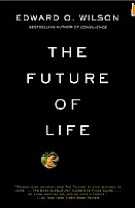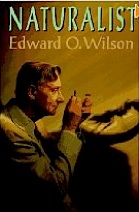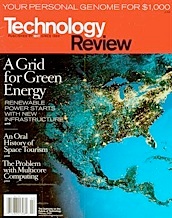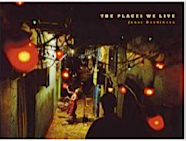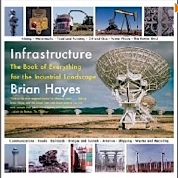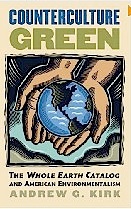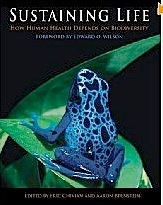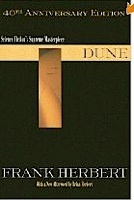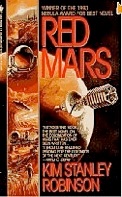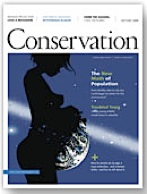RECOMMENDED READING
SCIENCE
Science (weekly magazine), Bruce Alberts, editor-in-chief
Nature (weekly magazine), Philip Campbell, editor-in-chief
If science is the only news, either of these prestigious weeklies will keep you current. You may want both. Nature is based in London, Science in Washington, DC. Both publish extensive original research papers, along with articles interpreting the news, essays, book reviews, and editorials. The competition between the two magazines keeps them sharp.
New Scientist (weekly magazine), Roger Highfield, editor
Many magazines attempt to gauge the meaning and significance of the news coming from science, but none do it better than this weekly, also from London.
Science Daily (online), Dan and Michele Hogan, editors
A measure of the accelerating pace of science is the usefulness of a daily update on breaking news. This free (ad-based) Web site covers all the current science press releases six times a day. It’s easy to tune your newsfeeds for just the subjects you’re interested in.
SciDev.Net (online), David Dickson, director
Applications of new science and technology for the developing world are the focus of this remarkable site. No ads; it is supported by aid organizations. By arrangement with Science and Nature, links to full-length articles and papers in those publications can be followed without paying their subscription fee.
Technology Review (bimonthly magazine), Jason Pontin, editor-in-chief
With its lively new Web site, this is now the best of many publications that track new technologies. Its editor and authors are comfortable voicing strong opinions.
National Geographic (monthly magazine), Chris Johns, editor-in-chief
No other magazine has maintained such high quality for so long to such good effect. The world’s finest photographs and graphics are now being matched with excellent writing to present current science in a planetary context.
CLIMATE
The Revenge of Gaia: Why the Earth is Fighting Back - and How we Can Still Save Humanity (2006), James Lovelock (UK)
The Vanishing Face of Gaia: A Final Warning (2009), James Lovelock (UK)
Of the many scientists studying climate change, Lovelock has the most comprehensive contemporary perspective, thanks to his decades of work on Gaia theory. These two books detail his analysis of how extreme the situation is becoming.
Six Degrees: Our Future on a Hotter Planet (2007), Mark Lynas (UK)
Lynas succeeds where most others fail in making inescapably clear how increasingly inhospitable the world will be with each increase of global temperature from one degree to six degrees Celsius. The book is a cure for an incrementalist approach to climate change. You don’t think “We can handle a two-degree rise” after you learn what that will mean.
Plows, Plagues, and Petroleum: How Humans Took Control of Climate (2005), William Ruddiman (UK)
If Ruddiman is right, climate is extraordinarily sensitive to human activity. That might be good news.
Climate Debate Daily (online), Douglas Campbell, Denis Dutton, editors
There are scores of Web sites collecting science news, political news, blog commentaries, etc. related to climate. Some are alarmist, some are skeptical, some are neutral. This one is aggressively and fascinatingly neutral, presenting a rich brew of strong comments on every climate topic in a debatelike format. The hosts are philosophy professors.
CITIES
Shack/Slum Dwellers International (online)
With SDI, the world’s urban poor have their own comprehensive Web site, linking the slum-improvement activities in 30 countries of the global south. Click around in it for a tour of amazing activities.
Shantaram: A Novel (2005), Gregory David Roberts (UK)
This is the Les Misérables of the twenty-first century. Set in Mumbai’s slums and underworld, it is one of the great romances.
The Places We Live (2008), Jonas Bendiksen (UK)
First rate photojournalism. Like the renowned Farm Security Administration photographers of the American Depression years, Bendiksen went to the slums of Caracas, Nairobi, Mumbai, and Jakarta and brought back beautiful photographs from inside the shacks, along with first-person accounts by the shack dwellers.
Shadow Cities: A Billion Squatters, A New Urban World (2004), Robert Neuwirth (UK)
Neuwirth demonstrates adventurous journalism at its best. When you’re curious or worried about something, go and live there. You’ll learn what to be really worried about, and what to be inspired by.
Squatter City (online); Stealth of Nations (online), Robert Neuwirth, blogger
Neuwirth is working on a book about the informal economy in slums and elsewhere. His two blogs keep you current on what he’s finding.
Unleashing the Potential of Urban Growth: State of World Population 2007, United Nations Population Fund (UK)
An upbeat, realistic survey of the current state of urbanization. It is a textbook for sensible urban policy.
Infrastructure: A Field Guide to the Industrial Landscape (2005), Brian Hayes (UK)
We know more about the things on trees (leaves, twigs, bark) than the things on telephone poles (primary and secondary electricity distribution lines, insulators, switches, fuses, transformers, street lights, cable TV feeders, phone cables, and the grounding lead). This glorious book cures ignorance on every infrastructural subject.
POPULATION
The Empty Cradle: How Falling Birthrates Threaten World Prosperity And What to Do About It (2004), Phillip Longman (UK)
Fewer: How the New Demography of Depopulation Will Shape Our Future (2004), Ben Wattenberg (UK)
Longman is a liberal, Wattenberg a conservative. Wattenberg is the better writer; Longman will get a more sympathetic hearing with environmentalists. Both are rightly worried.
NUCLEAR
Power to Save the World: The Truth About Nuclear Energy (2007), Gwyneth Cravens (UK)
Besides presenting a persuasive case for nuclear power, the book is an exemplary account of a Green coming to see the world the way an engineer does. It demonstrates why more should.
NEI Nuclear Notes (online), Mark Flanagan, David Bradish, lead bloggers
Nuclear advocacy at its best. Open-minded, even-handed, and alert, the Nuclear Energy Institute bloggers give context to nuclear news in a way that mainstream media don’t.
GENETIC ENGINEERING
Tomorrow’s Table: Organic Farming, Genetics, and the Future of Food (2008), Pamela Ronald, Raoul Adamchak (UK)
Organic farming marries genetic engineering and lives happily ever after. The book has a real-life texture missing in most works about GE or organic.
The Doubly Green Revolution: Food for All in the Twenty-First Century (1999), Gordon Conway (UK)
Experience tells. Conway has seen it all and knows exactly how GE fits into simultaneously feeding the world and protecting the environment.
Starved for Science: How Biotechnology Is Being Kept Out of Africa (2008), Robert Paarlberg (UK)
Anatomy of an ongoing Green-sponsored atrocity in Africa.
Mendel in the Kitchen: A Scientist’s View of Genetically Modified Foods (2006), Nina Fedoroff (UK)
Geneticist Federoff gives a much fuller background for how GE works with food crops than I could.
CropBiotech Update (online)
The successes of GE throughout the world, along with entanglements it meets, are chronicled on a daily basis here.
New Science of Metagenomics: Revealing the Secrets of Our Microbial Planet (2007), Board on Life Sciences (UK)
The oldest and far the most profuse form of life is finally being studied properly, and we learn we’ve been living all this time on “the planet of the bacteria.”
ENVIRONMENTALISM
Conservation (quarterly), Kathryn Kohm, editor
Good editors challenge their readers. Kohm publishes heresies and innovations as well as the workaday discoveries in conservation biology. The result is an environmental publication filled with real news.
High Country News (biweekly), Jonathan Thompson, editor
This tabloid specializes in Green reporting with a genuinely neutral point of view, so that ranchers, loggers, hunters, business people, and bureaucrats feel included rather than demonized. The region served is the American West.
Sierra (bimonthly), Bob Sipchen, editor-in-chief
A full-feature environmentalist magazine, this publication from the Sierra Club focuses on practical matters rather than the contentless inspirational woo-woo typical of Green periodicals such as Orion.
Earth Island Journal (quarterly), Jason Mark, editor
For a thoroughly partisan Green publication, this one has impressive journalistic reach.
OnEarth (quarterly), Douglas Barasch, editor-in-chief
Like its parent, the Natural Resources Defense Council, OnEarth is sober, careful, wide-ranging, and not allergic to business or government in its Green advocacy.
GreenFacts (online), Jacques Wirtgen, general manager
Based in Brussels, GreenFacts “provide summaries of scientific consensus reports on environment and health issues” in English, French, Spanish, and German. Its funding comes nonprofits and governments as well as private companies. The summaries are thorough, admirably designed for the Web, and linked to original sources. If you’re researching any Green subject, this is the first place to check.
Constant Battles: Why We Fight (2003), Steven LeBlanc with Katherine Register (UK)
There is a lot more to LeBlanc’s book than what I’ve summarized. Nature is best understood if you include the harsh parts, and the same is true of humanity.
The Idea of Decline in Western History (1997), Arthur Herman (UK)
Romanticism has left a trail of bodies, many of them suicides, ever since Rousseau. It is a cult of heroic despair that ill serves the environmental movement.
Blessed Unrest: How the Largest Movement in the World Came into Being and Why No One Saw It Coming (2007), Paul Hawken (UK)
This is the closest we have to a whole-Earth catalog of environmental and social justice organizations. I would love to see its online expression, WiserEarth.org, become truly comprehensive.
Counterculture Green: The Whole Earth Catalog and American Environmentalism (2007), Andrew Kirk (UK)
Some of the origins of the book you’re holding can be traced in Kirk’s study of the Green influence of the original Whole Earth Catalog
Earthrise: How Man First Saw the Earth (2008), Robert Poole (UK)
Don’t take my word that the first Earth photographs were a boon for environmentalists. Poole chronicles the whole original event and the worldwide inspiration that resulted.
ECOLOGY
The Future of Life (2002), Edward O. Wilson (UK)
Naturalist (1994), Edward O. Wilson (UK)
Wilson’s memoir, Naturalist, details one of the most productive lives in science, and The Future of Life lays out the roadmap of needs and techniques for conservation biology worldwide.
The Wild Trees: A Story of Passion and Daring (2007), Richard Preston (UK)
I wanted to include in Discipline a paean to the intrepid lives of field biologists, but I couldn’t fit it in. This book will do as a prime sample. In the tops of the tallest trees in the world a whole ecosystem was discovered by acrobatic biologists. New Yorker writer Preston learned the death-defying skills to join them there.
Lament for an Ocean: The Collapse of the Atlantic Cod Fishery (1998), Michael Harris (UK)
What happens when you try to protect the fishermen rather than the fish.
Degrees of Disaster: Prince William Sound: How Nature Reels and Rebounds (1996), Jeff Wheelwright (UK)
Deliciously inconvenient ground truth at the site of one of the great ecological-political arguments.
Sustaining Life: How Human Health Depends on Biodiversity (2008), Eric Chivian, Aaron Bernstein, editors (UK)
An exploration, with dazzling graphics, of one of the most essential ecosystem services.
Ocean: An Illustrated Atlas (2008), Sylvia Earle, Linda Glover (UK)
The best compendium of recent discoveries about the oceans and ocean life, presented with National Geographic panache. For humans this may be a “city planet,” but for life and climate it’s an ocean planet.
INDIANS
1491: New Revelations of the Americas Before Columbus (2005), Charles C. Mann (UK)
What really happened on our continent is totally different from what we learned in school.
Tending the Wild: Native American Knowledge and the Management of California’s Natural Resources (2005), M. Kat Anderson (UK)
I wish every region in the world could have so complete an account of how the first human inhabitants engineered the ecosystem.
Where the Lightning Strikes: The Lives of American Indian Sacred Places (2007), Peter Nabokov (UK)
The land is alive with ancient attention and reverence, and that continuity is worth maintaining.
RESTORATION
Bringing Back the Bush: The Bradley Method of Bush Regeneration (2002), Joan Bradley. (Most easily purchased online from CSIRO Publishing.)
Patience, vigilance, subtlety, craft, and success characterize the Bradley sisters’ approach to defeating alien-invasive plants. The book is specific to Australia, but its techniques apply everywhere.
Nature by Design: People, Natural Process, and Ecological Restoration (2003), Eric Higgs (UK)
Higgs is the first to offer a compelling general theory of restoration, leading to intelligent policy and practices.
Green Phoenix: Restoring the Tropical Forests of Guanacaste, Costa Rica (2003), William Allen (UK)
Preservation in the real world is always a richly tangled tale. Here is one of the great stories, with charismatic, eloquent Daniel Janzen in the middle of it.
Where the Land Is Greener: Case Studies and Analysis of Soil and Water Conservation Initiatives Worldwide (2007), Hanspeter Liniger, editor (UK)
There are so many ingenious ways to bring life and productivity back to degraded land. Collecting them all in one book is a tremendous public service.
Where the Wild Things Were: Life, Death, and Ecological Wreckage in a Land of Vanishing Predators (2008), William Stolzenburg (UK)
A well written and persuasive presentation of essential-predator theory.
Life Out of Bounds: Bioinvasion in a Borderless World (1998), Chris Bright (UK)
This is the best survey I’ve seen on the impacts of alien-invasive species and what to do about them.
The World Without Us (2007), Alan Weisman (UK)
Exceptionally thorough field research distinguishes this account of what life gets up to as soon as humans step away. It is a fascinating read.
GEOENGINEERING
Dune (science fiction, 1965), Frank Herbert (UK)
Because there were no nonfiction books on geoengineering available when I finished Discipline (though Jeff Goodell, Oliver Morton, and Eli Kintisch were working on some), I was forced to look for the cream of science fiction terraforming stories. Dune is as creamy as it gets. It features a Planetary Ecologist inspiring a native people to subversively convert their desert planet to an oasis.
Red Mars (1992), Green Mars (1993), Blue Mars (1996), science fiction trilogy by Kim Stanley Robinson (UK, UK, UK)
This is a fine “hard science” saga of the human drama and climatological sophistication it might take to make Mars a good place to live. I could imagine a similar “Blue Earth,” “Brown Earth” sequence of stories examining what would happen here if the climate tips all the way out of Gaian control, and Earth becomes the next Mars.
ACKNOWLEDGMENTS
Magazine editors cause books. In my case two new-on-the-job editors are to blame. Jason Pontin, who used to sweat with me in a mountain fitness program, was hired as editor of MIT’s Technology Review in 2004. Art Kleiner, a long-time Whole Earth editor, took over the editorship of Booz Allen Hamilton’s business quarterly, Strategy + Business, in 2005. New editors are supposed to bring new writers, so both invited me to submit something. For Pontin I wrote a brief polemic titled “Environmental Heresies.” Kleiner got a long-form article titled “City Planet.” The two pieces stirred up interest which led to some secondary press, and that led to a book proposal and contract, and here we are.
Literary agent John Brockman is another book-causer. Every book I’ve worked on since 1972 has conduited through him. During that time he mustered the world’s finest collection of scientist writers, engineered horizontal idea flow among them, nagged them toward publication, and enriched them. It’s a family business. John’s wife Katinka Matson and son Max Brockman were also in the thick of this project.
Drafts of my chapters were vetted by Paul Slovak, John Brockman, Nils Gilman, Robert Fuller, Brian Eno, Kevin Kelly, Ryan Phelan, Alexander Rose, George Dyson, James Lovelock, Richard Rhodes, Gwyneth Cravens, Rip Anderson, Peter Schwartz, Daniel Janzen, Pamela Ronald, Raoul Adamchak, José Baer, Peter Raven, Rob Carlson, and Rusty Schweickart. I hired James Donnelly for a first round of copy editing, and free-lancer Gary Stimelin did the second round. Editor Paul Slovak ran the show at the Viking Penguin end. Other credits there include: production editor, Tory Klose; jacket design, Gregg Kulik; interior design, Ginger Legato; index, Cohen Carruth, Inc. For the UK-based Atlantic Books edition, Toby Mundy was editor, and others involved were editorial director Sarah Castleman and jacket designer Coralie Bickford-Smith.
Throughout Discipline I make a number of predictions for which I should be held accountable. They include forecasts about urbanization after the 2009 financial crisis, peak world population, Chernobyl National Park, GE poplars in China, the future opinions of Amory Lovins and Bjørn Lomborg, the engineered revival of the American chestnut, and GE biocontrol organisms for restoration. Formal, falsifiable versions of the predictions, complete with my detailed argument in each case, have been placed on a Web site called Long Bets: www.longbets.org. There you may vote on my forecasts, comment about them, and even bet money against me about them. As history proceeds, you can watch me be wrong, or maybe even right. Better still, post your own predictions for the judgement of history.
—Stewart Brand, April 2009
